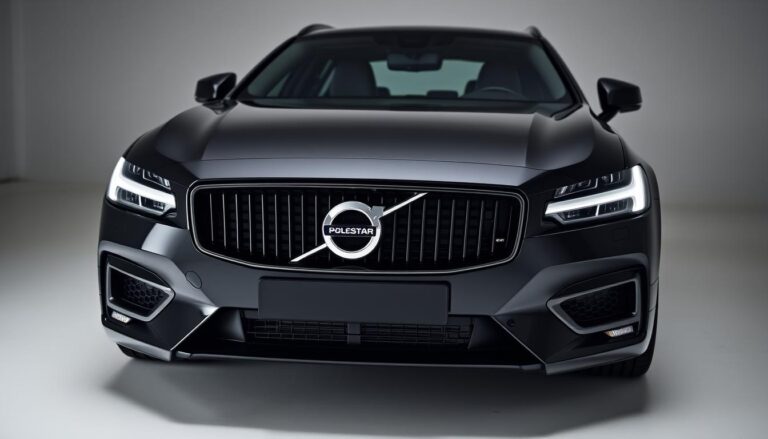This short guide helps owners and techs find a practical replacement for an obsolete spec. It names Chevron Dexron II, Mobil ATF 220, Castrol Transmax Dexron II, Valvoline Dexron II, and Lucas Dexron II as targeted choices for older cars, trucks, and some industrial gear.
Modern formulations often meet or exceed the original performance with improved thermal stability and oxidation resistance. That matters for shift feel, seal life, and service intervals in classic vehicles and seldom-driven machines.
Expect clear guidance on compatibility, viscosity behavior at cold start and hot running, additive durability, and seal conditioning. The aim is to save you time by listing tested options and a simple method to compare properties without chasing old stock.
Key Takeaways
- Original Dexron II is discontinued; use current ATFs that state compatibility.
- Chosen products offer practical choice for restorers and service pros.
- Modern blends provide better thermal stability and oxidation control over time.
- Verify approvals and OEM notes before you use a product in a given transmission.
- The right fluid preserves shift quality and component protection in older systems.
Why Dexron II Equivalents Matter Today for Older Transmissions
Many classic transmissions demand a fluid with the same hydraulic and friction traits the gearbox was built around. That is the core reason owners and techs still seek compatible modern options for aging systems.
Heat and oxidation cause varnish, sludge, and seal hardening over years. Modern ATF formulations improve oxidation resistance and thermal stability, so they slow varnish buildup and extend component life.
Wrong fluid type alters clutch friction and shift timing. That can make a vehicle feel harsh or let clutches slip. Technicians therefore favor products that state backward compatibility to match original design intent.
“Selecting the right replacement preserves cold-start flow, consistent hot operation, and hard-to-find parts.”
Synthetic-base options offer better resistance to thinning at high temperature and thickening at low. For stored or seasonally driven cars, that durability reduces moisture-related breakdown and keeps hydraulic response steady.
- Seals, clutch packs, and valves expect a specific friction profile.
- Improved oxidation resistance slows varnish and preserves shift feel.
- Choosing fluids that list compatibility with older specs aligns service with manufacturer intent.
What Dexron II Means in 2025: Compatibility, Backward Use, and Licensing Status
Today’s purchasing decisions hinge on clear backward-compatibility statements rather than legacy names.
Status in 2025: Older licenses for the original spec are retired. Manufacturers replaced that spec with a newer generation, then with a tighter-tolerance formulation. Buyers should look for modern products that explicitly list backward compatibility to the legacy specs on the label.
From early specs to tighter‑tolerance designs
Spec evolution moved from earlier generations to dexron iii and later to Dexron VI. Licensing ended for older specs as transmission designs changed.
Why it matters: Dexron VI was created for tighter tolerances and is GM‑backward‑compatible in most GM transmissions. However, GM advises caution when using it in non‑GM vehicles that originally required dexron iii.
Non‑GM applications: when to be cautious
Modern fluids trend to lower kinematic viscosity (~6 cSt at 212°F) versus older fluids (~7–7.5 cSt). That improves cold flow and reduces drag while keeping shear stability and friction durability.
“Read product data sheets for kinematic viscosity and friction properties before you choose a fluid for a given transmission.”
- Verify OEM recommendations for non‑GM vehicles.
- Confirm label claims on products such as Mobil ATF 220, Castrol Transmax Dexron II, Valvoline Dexron II, Chevron Dexron II, and Lucas Dexron II.
- Stable friction characteristics over service intervals prevent shifts in timing and clutch feel.
Practical tip: When managing mixed fleets, match the type called for by each transmission to avoid cross‑application errors and protect seals, clutches, and valve behavior in older vehicles.
How to Choose a Dexron II equivalent: fluid properties that impact service life
Match the fluid to real service conditions by focusing on the properties that drive longevity and shift quality.
Thermal stability and oxidation resistance are top priorities. Heat breaks down oil and additives, so choose a fluid with measured resistance to oxidation and thermal degradation. This matters under towing, sustained high load, or long idles.
Viscosity and shift feel: cold flow, gear engagement, and converter behavior
Viscosity at operating temperature and in cold starts governs clutch fill, gear engagement, and torque converter charge. Modern low‑vis ATFs (~6 cSt at 212°F) improve cold flow but can change converter behavior versus older 7–7.5 cSt oils.
Synthetic vs petroleum base oils: durability, resistance, and life
Synthetic oils keep viscosity steadier across temperatures. They resist thinning at high heat and thickening at cold starts. That stability preserves hydraulic function when petroleum blends may break down.
Additive packages: friction stability, seal conditioners, and shear stability
Look for additives that maintain friction control, protect seals, and resist shear. A strong package prevents varnish and keeps shift timing steady over time.
“Select fluids with published kinematic data and shear stability so you know how they behave in real service.”
| Property | Why it matters | What to check |
|---|---|---|
| Thermal stability | Prevents varnish and additive burnout under heat | Oxidation test data, high‑temp hold times |
| Viscosity behavior | Controls clutch fill, gear shift crispness, converter feel | Kinematic viscosity at 40°C/100°C, Brookfield cold‑crank |
| Additive durability | Maintains friction, protects seals, reduces wear | Friction durability tests, seal swell data, shear stability |
- Prioritize fluids with lab data on thermal resistance and oxidation.
- Balance low‑viscosity gains with the need for hydraulic stability in older valve bodies.
- When unsure, pick a product with proven track record in classic transmissions and clear published tests.
Dexron II Equivalent: Understanding 5 best Variations
Below we compare five commercially available ATFs that deliver familiar shift feel and improved seal care for legacy gearboxes.
Mobil ATF 220
Profile: Proven fluid with steady shift quality and stable friction traits aligned with dexron iii era expectations.
Notes: Works well under daily driving and light towing. Check label for backward compatibility before service.
Chevron
Profile: A legacy‑spec option for owners of older GM‑era cars and some hydraulic systems.
Notes: Simple friction profile and predictable feel. Use when you want a straightforward transmission fluid that mirrors original characteristics.
Castrol Transmax (DEX/MERC)
Profile: Smooth gear changes with good oxidation resistance and seal conditioning.
Notes: Suited to older GM and some Ford Mercon systems. Balanced viscosity helps predictable shift timing.
Valvoline (DEX/MERC)
Profile: Focused on cold‑start protection and friction stability for wide seasonal swings.
Notes: A solid transmission fluid for climates with big temperature ranges.
Lucas
Profile: Durable ATF with added wear protection and long‑interval performance.
Notes: Favored in classic transmissions that need steady friction durability and oxidation defense.
| Product | Key trait | Typical use |
|---|---|---|
| Chevron | Familiar friction | Classic GM, hydraulic systems |
| Mobil ATF 220 | Consistent shifts | Daily driving, light towing |
| Castrol Transmax | Oxidation control | GM & Mercon-era gearboxes |
| Valvoline | Cold-weather start | Seasonal climates |
| Lucas | Wear protection | High-mileage classic transmissions |
Practical tip: These atfs reflect modern oil chemistry that improves oxidation stability and shear resistance while keeping expected shift character. Always verify label claims for dexron iii and read product data sheets for viscosity and friction testing to match life and feel targets.
Real-world usage: which transmissions, years, and vehicles benefit most
Match fluids to real vehicles and transmission families to ensure predictable gear changes and seal life.
Non-electronic GM 3- and 4-speed automatics from the 1980s to the early 1990s respond well to products that state backward compatibility. Classic Saab, Isuzu, Opel, Holden models and some off-road units also fall into this group.
How the five products map: Chevron is a straightforward fit for older GM boxes. Mobil ATF 220 suits steady daily use and light towing. Castrol Transmax works where oxidation control matters. Valvoline helps cold-start service in seasonal climates. Lucas is chosen for wear protection on high-mileage units.
Electronic transmissions need care. If a vehicle has adaptive shift logic, follow OEM guidance and avoid ad-hoc swaps. Modern low-viscosity fluid can improve cold performance and keep converter feed steady when it matches the original spec.
“Confirm your transmission family and model years before you use dexron or dexron iii-labeled products.”
| Application | Typical years | Recommended product |
|---|---|---|
| Non-electronic GM 3/4-speed | 1980s–early 1990s | Chevron / Mobil ATF 220 |
| Saab, Isuzu, Opel, Holden | 1980s–1990s | Castrol Transmax / Valvoline |
| High-mileage classics / industrial | 1980s–early 1990s | Lucas |
- Inspect for leaks, shift flare, or delayed engagement before you change fluid.
- Confirm the dipstick/manual spec and cross-check the bottle for Dexron‑II/III statements.
- Prioritize fluids with published oxidation and shear data when long service intervals are expected.
Conclusion
Strong, prioritize products that display backward compatibility and measurable thermal resistance before you buy.
Pick a transmission fluid that lists the correct type for your vehicle and offers lab data on viscosity and oxidation. For classic gearboxes, consider Chevron Dexron II, Mobil ATF 220, Castrol Transmax Dexron II, Valvoline Dexron II, and Lucas Dexron II as starting points.
Modern atfs and synthetic blends improve thermal stability and resistance to heat, which is the top failure reason in older boxes. Low‑viscosity oils (~6 cSt at 212°F) can preserve converter feel when matched to the original spec.
Next steps: confirm the label, shortlist two or three products, compare datasheets, and set a regular service interval. Document dates and mileage to track performance and protect the transmission over time.
FAQ
What does a Dexron II equivalent mean for older transmissions?
A Dexron II equivalent is a fluid formulated to meet the performance needs of transmissions originally specified for that mid‑1980s to 1990s GM spec. It offers similar friction characteristics, seal compatibility, and basic thermal and oxidation resistance so older gearsets, torque converters, and valve bodies operate as intended.
Are modern ATFs backward compatible with systems calling for the older spec?
Some modern automatic transmission fluids are backward compatible, but not all. Newer formulations like current GM licensed oils and some universal ATFs may work, yet differences in friction modifiers and additives can change shift feel, apply pressures, or affect clutch life. Always check the vehicle maker’s recommendation before substituting.
When should I avoid using a newer ATF in a transmission originally specified for the older spec?
Avoid newer fluids when the transmission relies on specific friction behavior or contains older seals and materials sensitive to modern additives. Also be cautious with electronically controlled units where valve body calibration assumes a particular fluid viscosity and friction profile.
What fluid properties most affect service life in older transmissions?
Thermal stability, oxidation resistance, and shear stability are key. Good thermal stability prevents varnish and deposits. Oxidation resistance extends oil life and keeps additive function. Shear stability maintains viscosity and film strength under high loads, preserving clutch and gear protection.
How does viscosity influence shift feel and converter behavior?
Viscosity affects hydraulic pressure, clutch engagement speed, and torque converter slip. Thicker oils can delay shifts and increase drag; too thin oils may cause harsh engagements and reduced protection. Cold viscosity (low‑temperature flow) affects cold starts and initial shift quality.
Is a synthetic base oil better than a petroleum base for older units?
Synthetics generally offer superior high‑temperature stability and oxidation resistance, improving durability. However, compatibility with older seals and friction materials must be confirmed. Some older vehicles prefer mineral‑based blends to maintain correct shift behavior and seal swell.
How important are additive packages for older transmission service life?
Very important. Friction modifiers determine proper clutch grab and smooth shifts. Seal conditioners prevent leaks in aging gaskets. Anti‑wear and anti‑foam agents reduce wear and protect hydraulic circuits. Choose a product whose additive balance matches the transmission’s original needs.
Can I use branded legacy products marketed for the older spec?
Branded legacy products such as those sold by major oil makers and reputable specialty brands are often the safest choice for classic systems. They’re formulated to mimic the original spec’s friction and material compatibility. Prefer well‑known manufacturers with clear technical data.
Which vehicles and years most commonly require the older specification fluid?
Classic GM cars and trucks from the 1980s and 1990s, plus models from Saab, Isuzu, Opel, and some industrial and hydraulic equipment, frequently call for the older specification. Check the transmission tag, owner’s manual, or repair manual for the exact requirement.
Do electronic transmissions change the fluid recommendation?
Yes. Electronic transmissions can be sensitive to fluid viscosity and friction modifiers because the control module expects specific hydraulic responses. Always follow manufacturer guidance for electronically controlled units to avoid poor shift quality or transmission faults.
How often should I change fluid that meets the older specification?
Service intervals depend on duty cycle and vehicle use. Under normal driving, a change every 30,000 to 60,000 miles is common for older fluids; severe use or towing calls for more frequent changes. Monitor fluid color, smell, and metal particles and adjust intervals accordingly.
What are common signs the transmission needs the correct fluid replaced?
Signs include slipping, delayed or harsh shifts, burnt smell, darkened fluid, or increased noise. These can indicate degraded friction modifiers, oxidation, or contamination. Using the correct fluid and addressing mechanical wear improves longevity.
Can mixing a legacy‑type fluid with a modern ATF cause problems?
Mixing can alter friction characteristics and additive concentrations, leading to unpredictable shift feel and potential clutch wear. If mixing is unavoidable, refill with the recommended fluid at the next service to restore intended performance.
How do I verify a product’s suitability for my vehicle?
Review the product’s technical data sheet to confirm it lists compatibility with the specific older specification and materials. Cross‑reference with the vehicle’s service manual and consult OEM recommendations or a trusted transmission specialist when in doubt.







